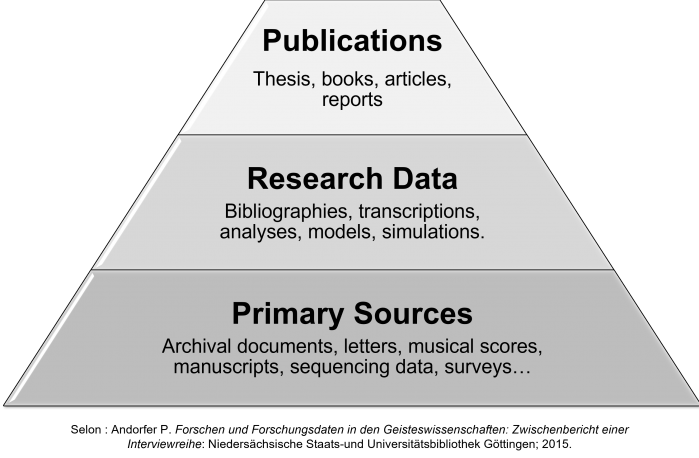Identify research data
Research data are defined by the OECD as « factual records (numerical scores, textual records, images and sounds) used as primary sources for scientific research, and that are commonly accepted in the scientific community as necessary to validate research findings » (p.18, 2007).
Research data can be produced in many formats and using a wide range of methodologies. Finally, it is important to note that almost all disciplines and research fields produce research data: mathematics, anthropology, computer science, the humanities, law, etc.
Examples of research data :
- Documents (text, word), spreadsheets, slides
- Photographs, films
- Surveys, transcripts, codebooks
- Samples, genomic sequences
- Laboratory notebooks, field notebooks
- Audio or video recordings
- Computer code, algorithms, models, scripts
- Methodologies and workflows
- Bibliographies
Given this variety, it is sometimes difficult to accurately identify one's research data. However, the pyramid below proposed by Andorfer (2015) facilitates the understanding of the role of research data in a scientific research process, especially in the social sciences and humanities:

Typology
Here are different typologies that can be used as guides to identify the research data of a project.
